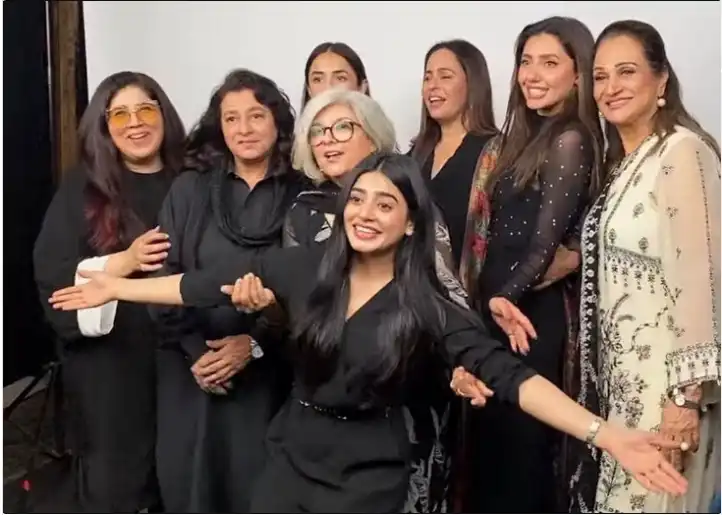If you’ve ever spent multiple lazy evenings glued to primetime dramas, you’ve undoubtedly come across: the villain. These characters are the true lifeblood of our television screens, spinning webs of deceit and sprinkling chaos like it’s glitter. So, what makes a perfect South Asian villain?
Let’s dive into their iconic if utterly predictable personas.
1. Evil Mother-in-Law
The original boss villain. Her superpower? Crushing the hopes and dreams of her daughter-in-law with a single arched eyebrow. This saas is deceptively civil in public but a full-blown dictator in private – she’s competing with everyone especially her son’s wife.
The controlling saas archetype may be low hanging fruit for jokes but there is a reason it endures – people relate. This vulnerable mother is a reminder of how power hierarchies within families disproportionately target women, turning domestic spaces into battlegrounds.

- Signature Dialogue: “Meri baat yaad rakhna, yeh larki is ghar ka sukoon ko barbaad kar degi.”
- Wardrobe: A dupatta perched on her head like a crown of judgment and an endless collection of statement necklaces.
- Hobbies: Eavesdropping, emotionally blackmailing her son, and planning her daughter-in-law’s downfall while sipping chai.
2. Cunning Rival
While the saas and nand focus on tearing families apart, this villain’s battleground is unlimited. Whether it is a e corporate tycoon, political leader or vengeful relative these villains are ready to take down their rivals. They have money, power, and a really intimidating swivel chair.

- Key Move: Dramatically throwing papers on the table during arguments.
- Favorite Dialogue: “Yeh sirf shuruaat hai. Tumhari tabahi ka asli maza toh ab aayega.”
- Wardrobe: Power suits for men; blazers and silk scarves for women. Always accessorized with disdain for their underlings.
3. The Modern Girl
Society often demonizes women who prioritize individuality over conforming to domesticity. The polar opposite of the heroine, our modern villain is independent, stylish, and unapologetically confident.

But in the world of South Asian dramas, these qualities make her a certified homewrecker. Whether she’s a coworker, a childhood friend, or the girl-next-door, her primary role is to make the heroine’s life miserable by stealing her man.
- Wardrobe: Over-the-top makeup, Western outfits paired with an impeccable bio-dry and a smile that says, “Game on.”
- Best Move: She’s a pro at casually dropping hints about her closeness to the hero: “Oh, remember that time we went out for coffee? So fun!”
- Worst Move: Underestimating the heroine’s ability to turn the tables with one heartfelt monologue.
4. The Frienemy
Ah, the fake best friend. She pretends to support the heroine but is secretly plotting her downfall, usually to win the hero for herself. Her betrayal always stings because she starts out as the ultimate confidante (sometimes even a sister!).

This trope mirrors societal obsession with appearances and how toxic competition often breeds betrayal among women.
- Key Move: Feeding the heroine bad advice while ensuring the hero knows she’s the “real” good girl.
- Worst Move: Getting caught red-handed while eavesdropping.
- Wardrobe: Modest but trendy—she wants to blend in as the supportive sidekick while subtly outshining the heroine.
- Favorite Dialogue: “Tum toh mujhe apni behen maanti ho na?”
5. Conniving Nand
The nand (sister-in-law) is often the saas’s loyal apprentice but don’t underestimate her as a villain in her own right – especially if she is unmarried or (hawww) divorced. TV nands can be vengeful, petty and ready to stir drama at a moment’s notice. Why do drama producers love creating these evil in-laws? Possibly because they do often reflect a sad reality of family dynamics in South Asia. Tired though the trope may be, it is relatable to many.

- Signature Smirk: Perfected in front of a mirror for hours. She uses it every time her plans work (which is every episode).
- Favorite Line: “Ami, main ne toh pehle hi us larki ka asli chehra dekh liya tha.”
- Wardrobe: Bright colors and a cat eyesharp enough to cut through steel.
Why We Love Them
Let’s be honest: the heroes and heroines may get the applause, but it’s the villains who keep us coming back. They’re unapologetically dramatic, wildly over-the-top, and oddly relatable (who hasn’t wanted to flip a table in frustration?).
Whether they’re plotting against the lead couple or simply delivering monologues to an empty room, these characters remind us why South Asian dramas are the ultimate comfort watch. After all, every bechari heroine needs an evil saas to cry about, and every brooding hero needs a business rival to defeat.
So next time you see a dupatta-clad saas glaring at her bahu, take a moment to appreciate the sheer brilliance of her villainy. Because without her, we’d all just be watching a boring love story. And where’s the fun in that?







 Saim
Saim 

 Naqsh begins today, taking over the Faraar tim
Naqsh begins today, taking over the Faraar tim




